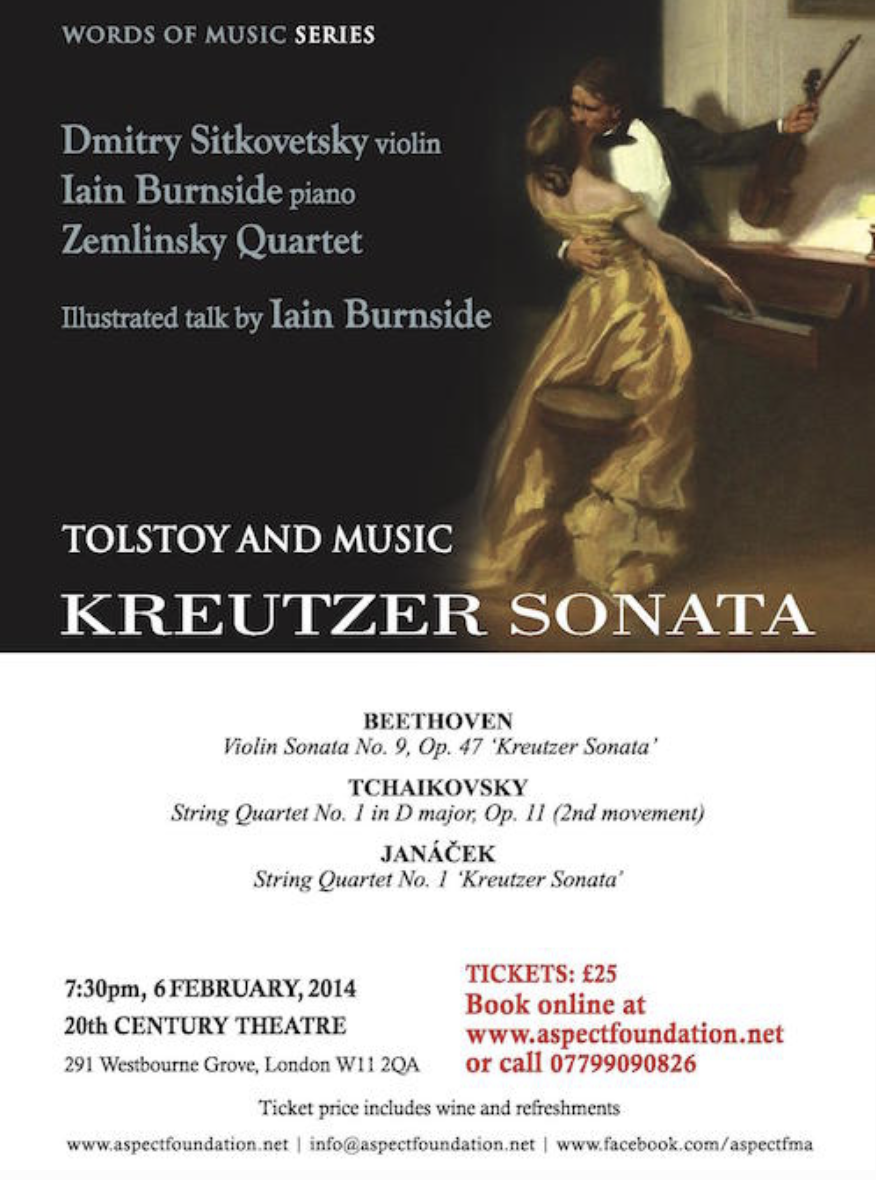TOLSTOY AND MUSIC: KREUTZER SONATA
FEBRUARY 6, 2014
20th Century Theatre, London
Dmitry Sitkovetsky violin
Iain Burnside piano
Zemlinsky Quartet
Illustrated talk by Iain Burnside
Beethoven Violin Sonata No. 9, Op. 47 “Kreutzer Sonata”
Tchaikovsky String Quartet No. 1 in D major, Op. 11 (2nd movement)
Janáček String Quartet No. 1 "Kreutzer Sonata"
Beethoven’s ‘Kreutzer Sonata’ for violin and piano (dedicated to Rodolphe Kreutzer, a French violinist who never performed it) is the centerpiece of Tolstoy’s disturbing and controversial novel, ‘The Kreutzer Sonata.’ The novel in turn inspired the Czech composer, Leoš Janáček, to write his eponymous, intense and feverish first string quartet.
Tolstoy, deeply responsive to music, had a particular passion for folk music (the second movement of Tchaikovsky’s first quartet, based on a folk song from Tolstoy’s childhood, brought tears to his eyes). However, he was highly selective about the works of Western composers. While Tolstoy admired Beethoven and was captivated by his music, he was also of the view that the composer had brought about the decline of musical art.
In ‘The Kreutzer Sonata’, Tolstoy expresses his complex and controversial views on marriage and sexuality, focusing on the conflict between the main character, Pozdnyshev, and his unnamed wife, who plays Beethoven’s sonata with a spirited violinist. While she becomes impassioned by the music, Pozdnyshev, believing himself deceived, is overcome by a jealous rage and murders his wife.
The musical narrative of Janáček’s String Quartet No. 1, ‘Kreutzer Sonata’, seems to mirror the unfolding marital tragedy of Tolstoy's novel, while the third movement of the quartet is modelled on the second theme of Beethoven’s ‘Kreutzer Sonata.’





